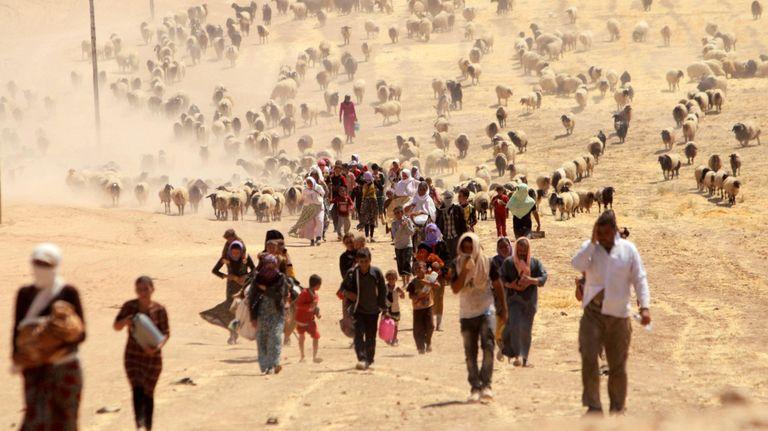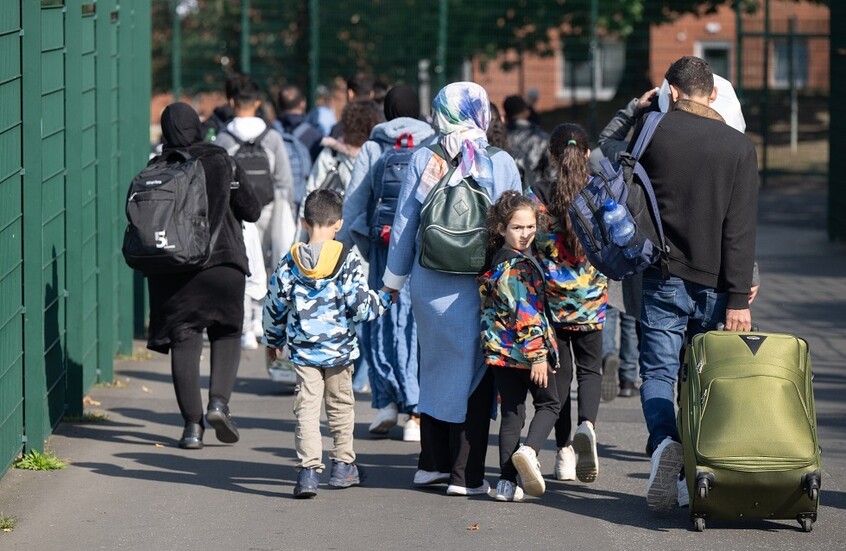Globally, there is growing concern about the effects of the deteriorating phenomenon of climate change, most notably climate migration. By 2050, there will likely be 216 million climate migrants worldwide as a result of rising temperatures, droughts, a shortage of water and precipitation, and increasing sea levels brought on by melting polar ice caps.
In this regard, Filippo Grandi, the UN High Commissioner for Refugees, revealed that they require sustainable financing because they are “not ready for the increasing waves of migration due to climate change.”
Scary Statistics
The World Bank estimates that by 2050, there may be 216 million climate migrants worldwide, as whole families—particularly in Africa and the Middle East—will be compelled to relocate within their nations. 90% of the world’s refugees, according to the United Nations High Commissioner for Refugees (UNHCR), are from regions that are extremely vulnerable to the consequences of climate change.
The Age of Climate Migration
Last September, the International Organization for Migration (IOM) warned that “the world has officially entered the era of climate migration,” calling for addressing the impact of climate change on population movements.
In his press statements, professor and environmental expert Ramadan Hamza stated: “Undoubtedly, one of the most dangerous effects of climate change is the increase in the phenomenon of internal and external migration, as people are forced to flee many countries and regions due to the increasing frequency of dry seasons, the expansion of desertification, the failure of agricultural crops to provide them with food security, the rise in sea levels in coastal cities, and the rise in dust storms.”
According to scientific projections, the number of climate migrants is expected to surpass one and a half billion within a few decades. This underscores the gravity of the issue and the significant risk it poses to security, stability, and development on a global, regional, and continental scale.
Therefore, in Hamza’s opinion, the international community must step up its efforts, implement practical steps to lessen the effects of climate change and adapt to its consequences, and begin developing urgent development plans to prevent this phenomenon from getting worse. These urgent steps include using renewable energy sources like solar and wind power, cutting back on the use of fossil fuels, and supporting important productive sectors like agriculture in rural areas affected by climate extremes.
He adds, “Efficient planning may guarantee that the displaced and upcoming regions are well prepared to fulfill the requirements and ambitions of their citizens while also curbing the negative effects of climate migration, which have significant financial, social, infrastructure, and safety implications.”
Connection between Climate Change, Conflict and Displacement
However, Xavier Devictor, Co-Director for the WB’s World Development Report 2023, and Kanta Kumari Rigaud, Lead Environmental Specialist at the World Bank, note in their study that it is unclear how climate change, conflict, and war-induced displacement are related.
They added, “Climate change is a significant driver of migration, even if most people move within their own countries. However, politics is mostly to blame for the conflicts that result in the greatest number of refugees and internally displaced people (IDPs) today: Afghanistan, Myanmar, Sudan, Syria, Ukraine, and Venezuela.”
The researchers argue that more research is needed on the causal links between climate change, conflict, and conflict-induced displacement; the circumstances in which these conditions emerge; and possible interventions that can mitigate risks.
In an article on the World Bank’s website, they add, “Future cross-border migrations are unpredictable. Due to the unprecedented nature of climate change, quantitative models often rely on conjectures rather than experiences.”
The magnitude and course of future population shifts, however, will mostly depend on the adaptation and mitigation plans for climate change that are put into place in the upcoming years, that is, on the decisions that are being made and those that have not yet been made.
In a similar vein, the movement of individuals within their own countries or across borders will be determined by the decisions that the countries of destination have not yet made, as well as by whether they support, reluctantly accept, or reject new migratory movements.
Some estimates suggest that by the end of the century, some 210–230 million people will have to move, mostly within their own countries.
Despite the magnitude of these figures, they need to be contextualized, especially given the projected population growth or urbanization trends in the affected countries.
The Poor are Unable to Migrate
In fact, the real problem may not be with people who move, but rather with those who are so impoverished by climate change that they are unable to even move. Since it is expensive to relocate, the most vulnerable individuals are frequently caught in a vicious cycle of poverty in places affected by climate change.
The two researchers stress the need to approach the concept of “climate refugees” with caution since climate change is frequently only a trigger. Since the abrupt arrival of extreme weather events has caused the displacement of almost 300 million people over the past 15 years, it exacerbates or speeds up other drivers of migration.
However, the majority of these movements did not traverse international borders, and a sizable part of them were transient.
Particular problems arise in the case of small island republics that could be mostly submerged by rising sea levels.
However, in most other regions that are subject to slow-onset climate impacts, specific cases of migration and long-term displacement cannot be traced back to climate alone.
They point out that people are “on the move because they are no longer able to meet their needs, which is attributable to a range of circumstances exacerbated by climate change, such as insufficient land available for agriculture, fluctuations in commodity prices, and personal considerations. Hence, the idea of people moving due to climate change—which would serve as the basis for a “climate refugee” status—needs to be dealt with in all its complexity.”
Large numbers of refugees live in areas affected by climate change, and in these areas, forced displacement and climate change lead to one being exacerbated by the other, so support is urgently needed.
In a context of scarce funding, the challenge is not only to mobilize more resources but also to ensure that they are used in a cost-effective manner. This necessitates researching possible climate effects prior to choosing to accept a sizable number of refugees in regions susceptible to climate change.
Incorporating refugee-hosting areas into national climate adaptation plans is also necessary, as this is likely to yield better results than developing new, ad hoc instruments that are likely to remain underfunded.
Lastly, and above all, there is a need to take action right away. Millions of people have already moved as a result of the repercussions of climate change, which are already being felt. Massive climate action is required right now if we are to stop unforeseen events that could result in massive human suffering.
Some climate-related events may have exacerbated these crises by worsening economic conditions and thus creating more social tensions, but it is clear that the roots of these conflicts go beyond climate change.
However, there are slight differences in this proposition. In some parts of the world, such as northern Nigeria, climate change has prompted pastoralists to adjust their migration routes, creating local conflicts with farmers and causing internal displacement as a result.
In Somalia, people who decided to stay despite the violence were compelled to flee when droughts struck their areas; the multiplier effects of climate change and conflict made them refugees.





